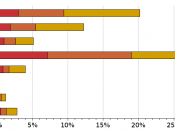According to a new assessment the "Red List" (which tells which animals are headed toward extinction) is not correct. The assessment concludes that because it does not take into account the full threat posed by humans it does not reflect all threats to species. Researchers Alexander Harcourt and Sean Parks from the University of California have found that after reassessing two hundred primate species from the 1996 "Red List" seventeen species which were said to be low risk should now be reassigned as high priority and two species said to be high priority are now at a lower level of threat.
I think that these researchers have provided good data for their research and have proved that the "Red List" may be inaccurate. However, I think that the "Red List" has done a quality job of tracking endangered animals. The threat of humans should not be that big of an issue that it needs to be factored into the system any more than it already is.
According to Craig Hilton-Taylor there is already a specific classification system for threats such as humans, which may not be as ideal as the new assessment, but still gets the point across. I think that if researchers wanted to be picky they could find many more errors in the "Red List", but I think it works fine the way it is and doesn't need to be changed.


